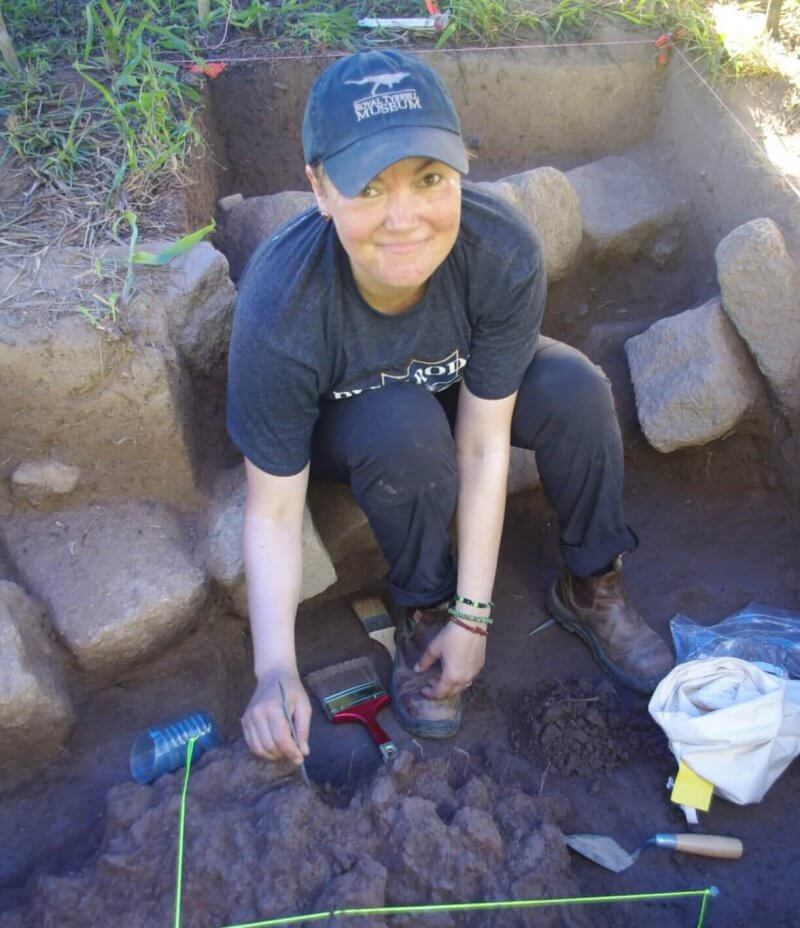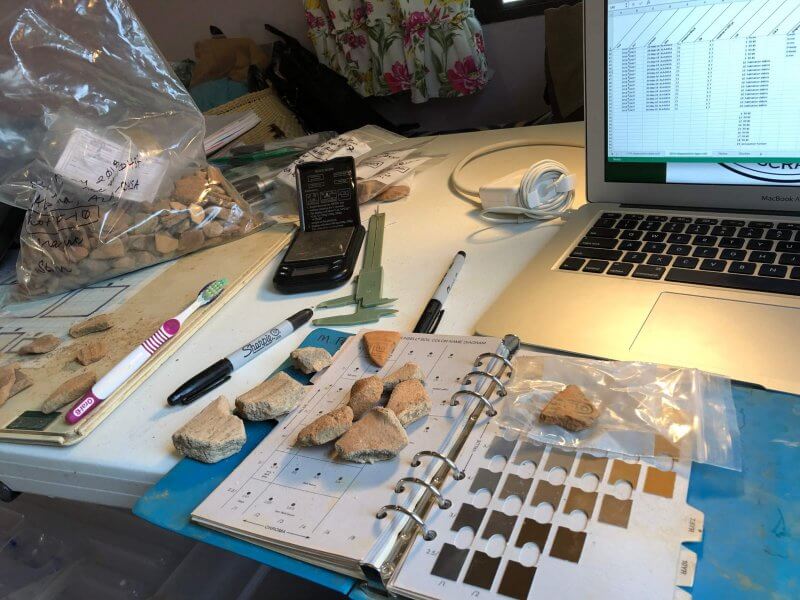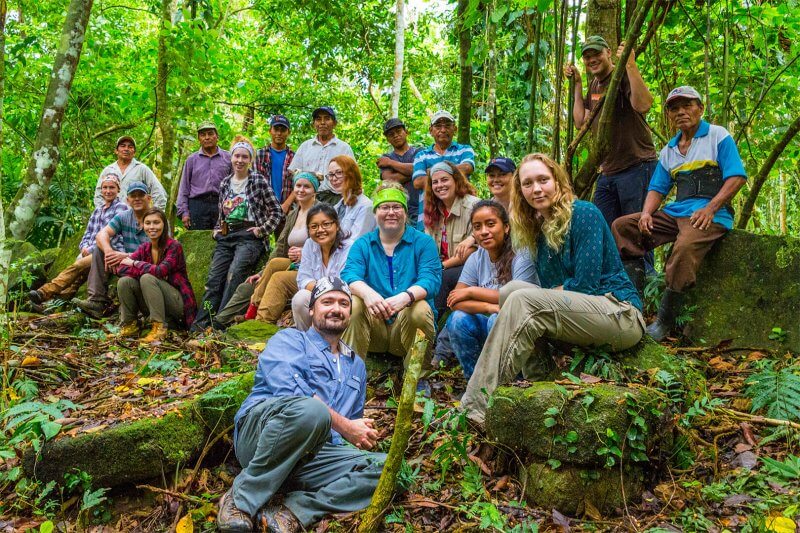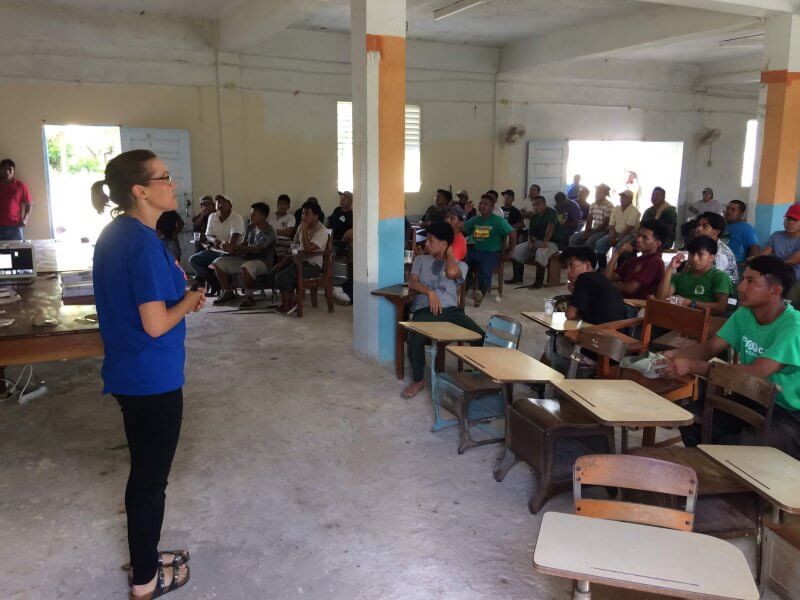When we think of Maya archeology, the first thing that comes to mind is the grand cities and pyramids at famous sites like Chichén Itzá, Tikal and Palenque.
The archeological work on those sites certainly tells us a great deal about the lives of ancient Maya nobility and religious leaders… but what was going on in the lives of the commoners?

For Athabasca University archeology professor Dr. Meaghan Peuramaki-Brown, whose entire academic career has focused on Maya archeology, this question helps drive her passion for research into the more mundane aspects of life for the ancient Maya.
She explores these topics with the Stann Creek Regional Archaeology Project (SCRAP).
And with several grants funding her research-including the second season of a Social Sciences and Humanities Research Council (SSHRC) Insight Grant, a SSHRC Explore Grant and a National Geographic Explore Grant-we can expect to hear more about her work in 2019 and beyond.
Bitten by the archeology bug

Peuramaki-Brown's passion for Maya archeology arose in her youth when her parents-who were both trained as foresters but got into archeological studies "on the side"-would take her to Mexico where she saw many sites.
Her interest in household-level archeology, specifically, arose during her time as an undergraduate student and culminated with an independent research project where she got to excavate a house on her own.
"Ever since, I've been interested in household archeology, and why people settle where they do on a landscape, and who do they settle among, and what are the daily activities of not only a household but a larger community that the household would belong to," she said.
The interest in household archeology followed Peuramaki-Brown through her master's degree, where she did archeological work in Honduras-outside the Maya area, but not too far-and that in turn all rolled into her PhD work.
As she explored the topic, her interest broadened from smaller-scale topics like pottery-making within households in small communities, to bigger topics around urbanism like how communities are integrated and eventually disintegrate from the perspective of commoner households.
Stann Creek District & Alabama

Now, as a researcher leading her own project, Peuramaki-Brown has been providing these kinds of research opportunities in her own right with SCRAP since 2014.
The Stann Creek District, located in east-central Belize, piqued Peuramaki-Brown's interest for several reasons. Minimal work had ever been done there before, and it's now subject to development impact because of growth in industries like citrus, shrimping, bananas and tourism. The human impact on the material culture in the region also includes some degree of looting.
Regardless of human impacts on the area, there are many physical traits that make the region somewhat less appealing for archeological work.
"In this region there's little to no limestone, so they're building out of materials such as granite, and they're not building very high," Peuramaki-Brown said. "The monumental architecture is massive in terms of its footprint, but it's not high at all. It's just the platforms, then they're building perishable structures atop the platforms."
The physical features of the landscape itself also pose a big challenge. The soil in the region, which is close to the mountains, is very acidic. It eats away at bone, and it eats away at the outside of the pottery that's found there.
"One of the greatest challenges of my work in the area, and our team's work, is we are not just trying to do the normal stuff of archeology like finding out when people lived there, and how they lived," she said. "We're finding new ways to tackle those questions because the traditional methods don't always work as well as we would wish."
Despite the challenges in the region, Peuramaki-Brown and her team have made some significant headway in understanding what was happening in Stann Creek-specifically at the small site of Alabama, which is named for the hometown of the banana company that once operated in the area-when the Maya settled the region. But as with a lot of research of this type, the more they learn the more questions arise.
"The big questions we have really, are, again to confirm that this community is popping up quite quickly relative to other Maya communities, and we're wondering why that's the case," Peuramaki-Brown said.
There are some working hypotheses about that question, including the belief the settlement resulted from mass migrations during the period known as the Maya Collapse caused by drought, warfare and other pressures. Another explanation is that the settlement arose as a result of the desire to control resources in the area near the Maya Mountains, which are unique within the lowlands of the Maya world.
"Given the oddness of this site, we're also starting to think perhaps we have migrations of non-Maya people into this area," Peuramaki-Brown said. "These are just some of the ideas floating around about why this community might have appeared."
On the horizon

In the coming year and beyond, there is much work to do to further explore the region and better understand what was happening.
The challenges with existing technology are one of the reasons Peuramaki-Brown and her team will be using LiDAR, a surveying method like radar but using pulsed laser light. They will do preliminary exploration of difficult-to-reach site of Pearce to the north of Alabama within a forest reserve, where limited research has been conducted.
"We're interested in the relationship between the people in these two communities because they're connected by a gap between the Maya Mountains," she said. "Getting to understand what's going on at that site will be important to really clarify what's happening overall."
The SCRAP team will also be using a grant from National Geographic to make an augmented-reality tour of the Alabama site, designed specifically for educational purposes for local students near the site. This will also serve as a proof of concept for a new way to approach heritage management and tourism within Belize.
Right now, the sites open to tourism are excavated and while they're not reconstructed, they're shored up to give an idea of what the architecture looked like in the past. The challenge there is that this is extremely expensive, especially for a small country like Belize.
"We're interested in how augmented reality and virtual reality can help enhance tourist experiences without having to invest a huge amount of money and labour," she said.
For more information about the work the SCRAP team is doing, and to see some of their work, visit the project website at www.scraparchaeology.com.